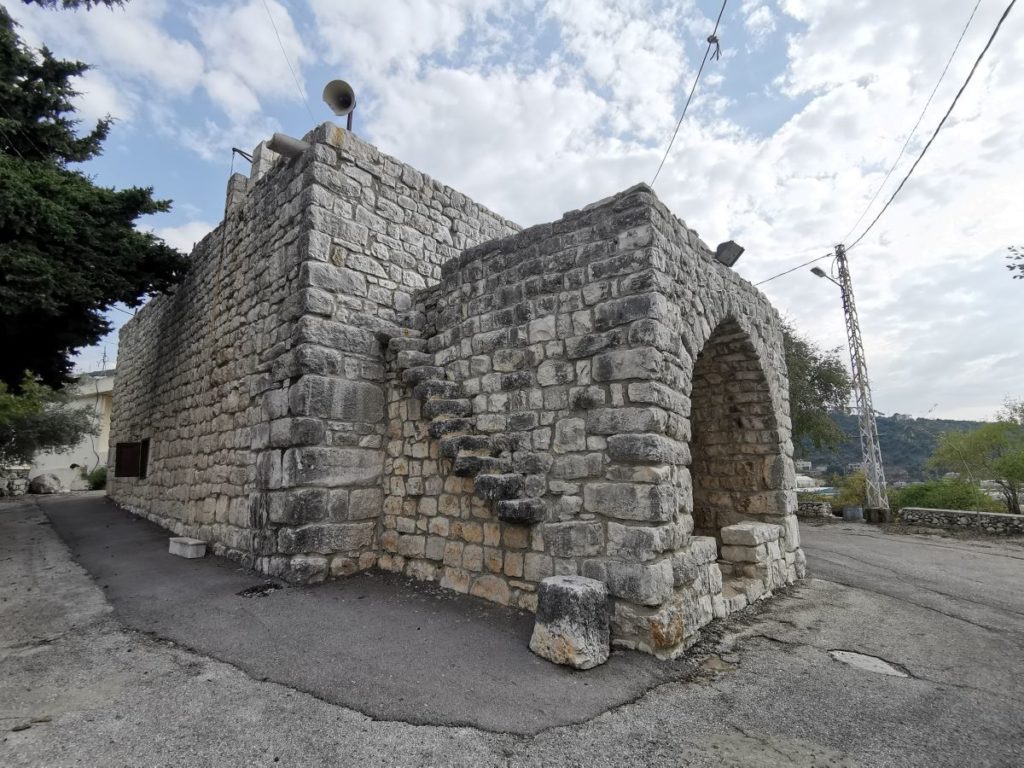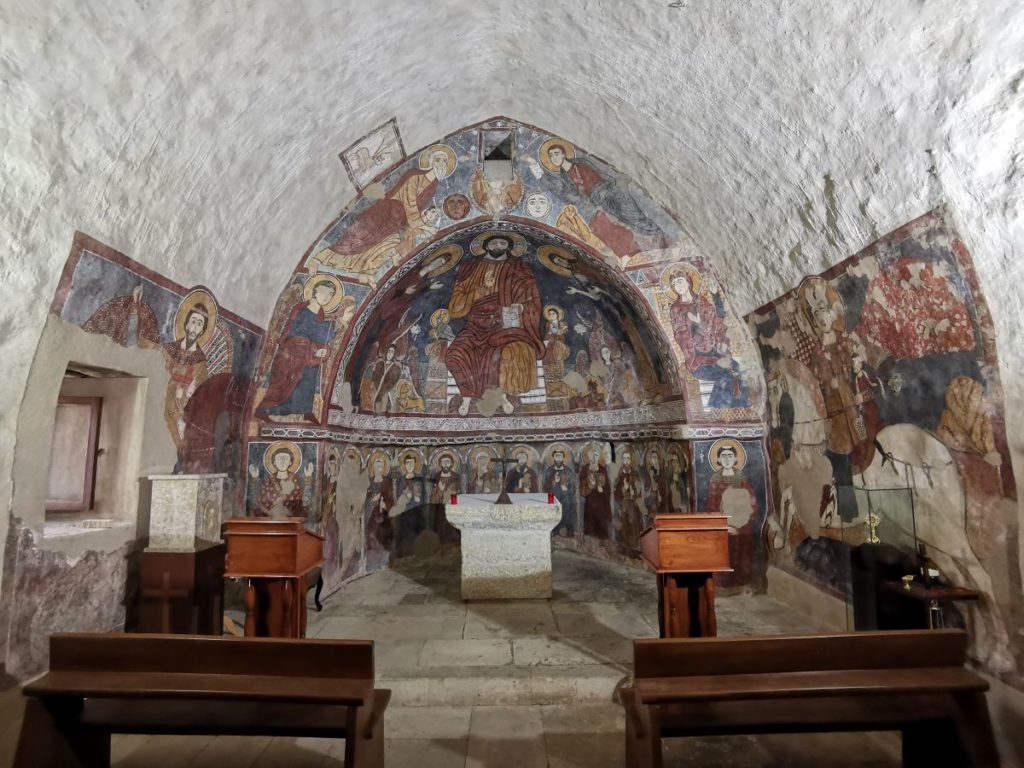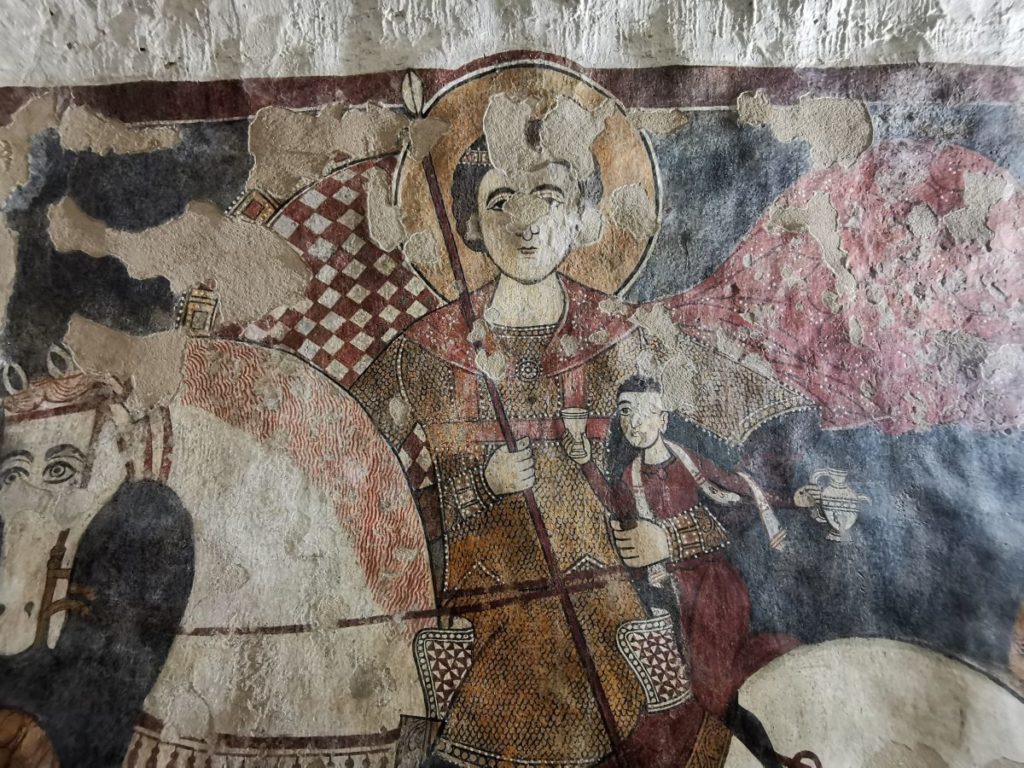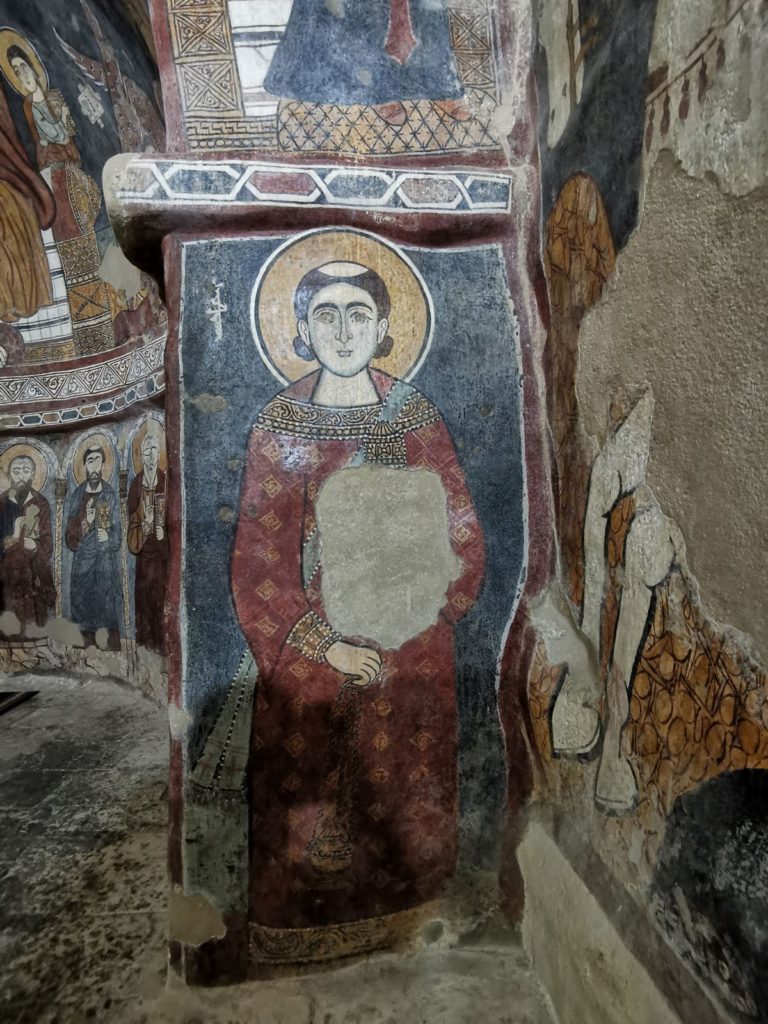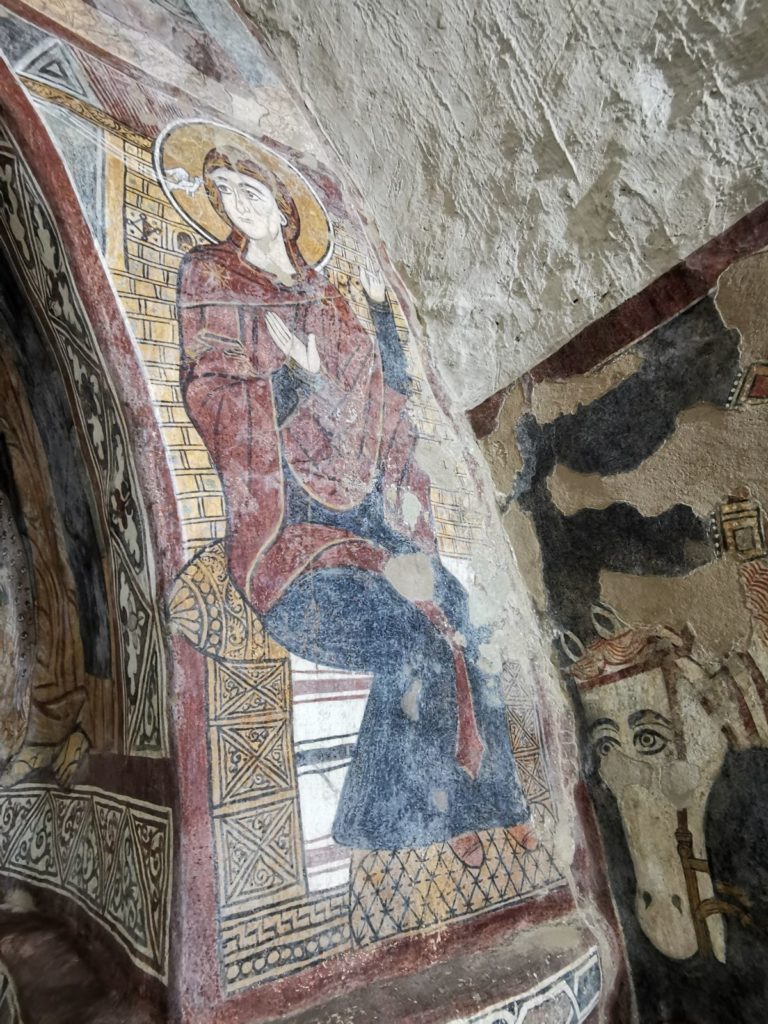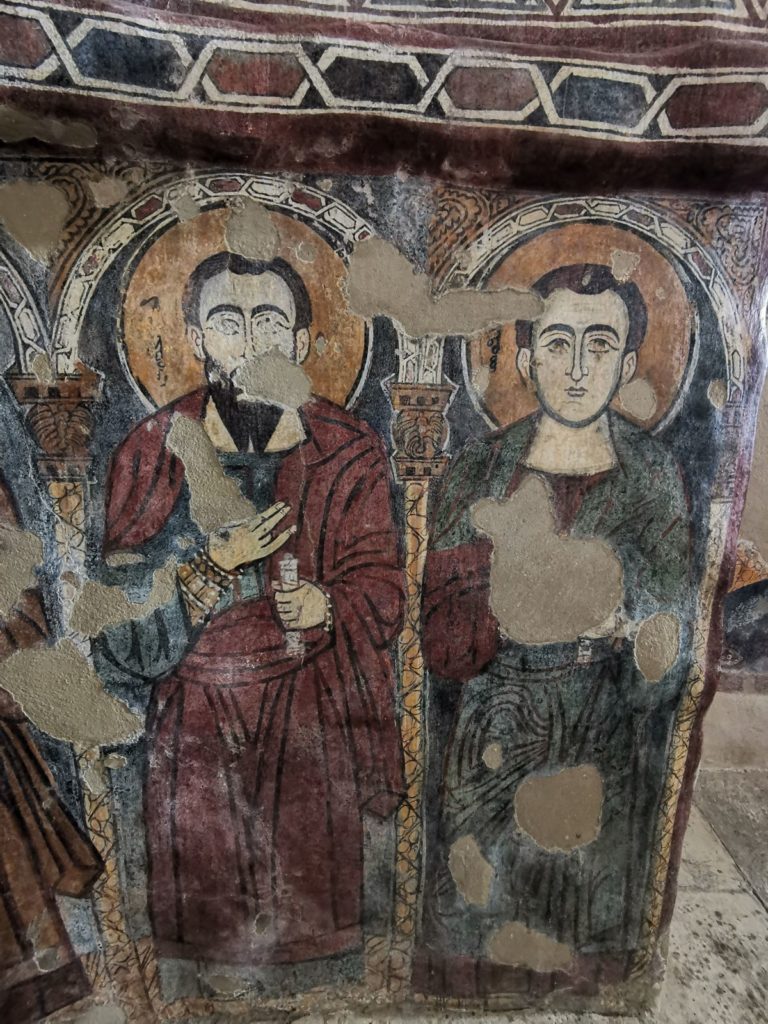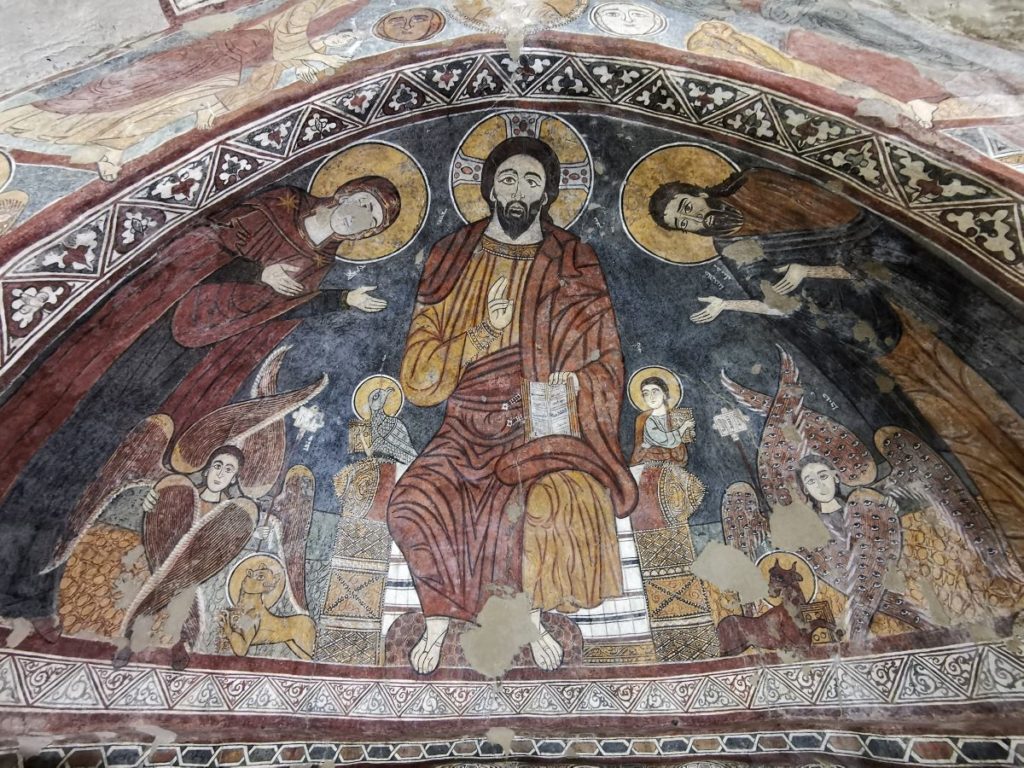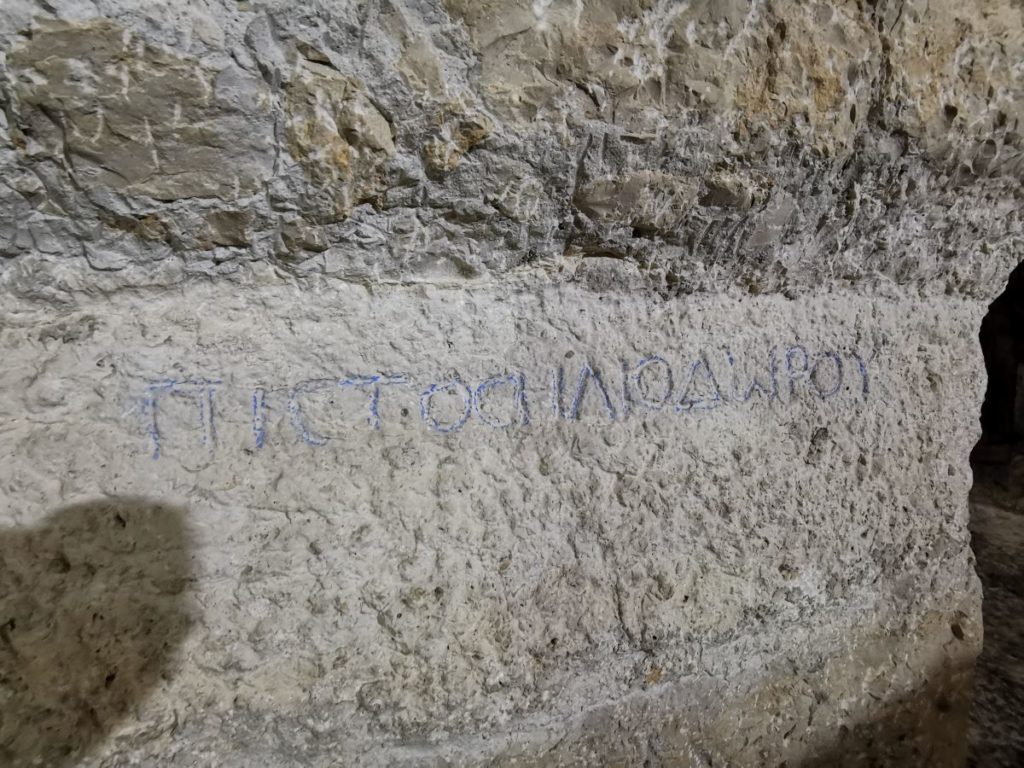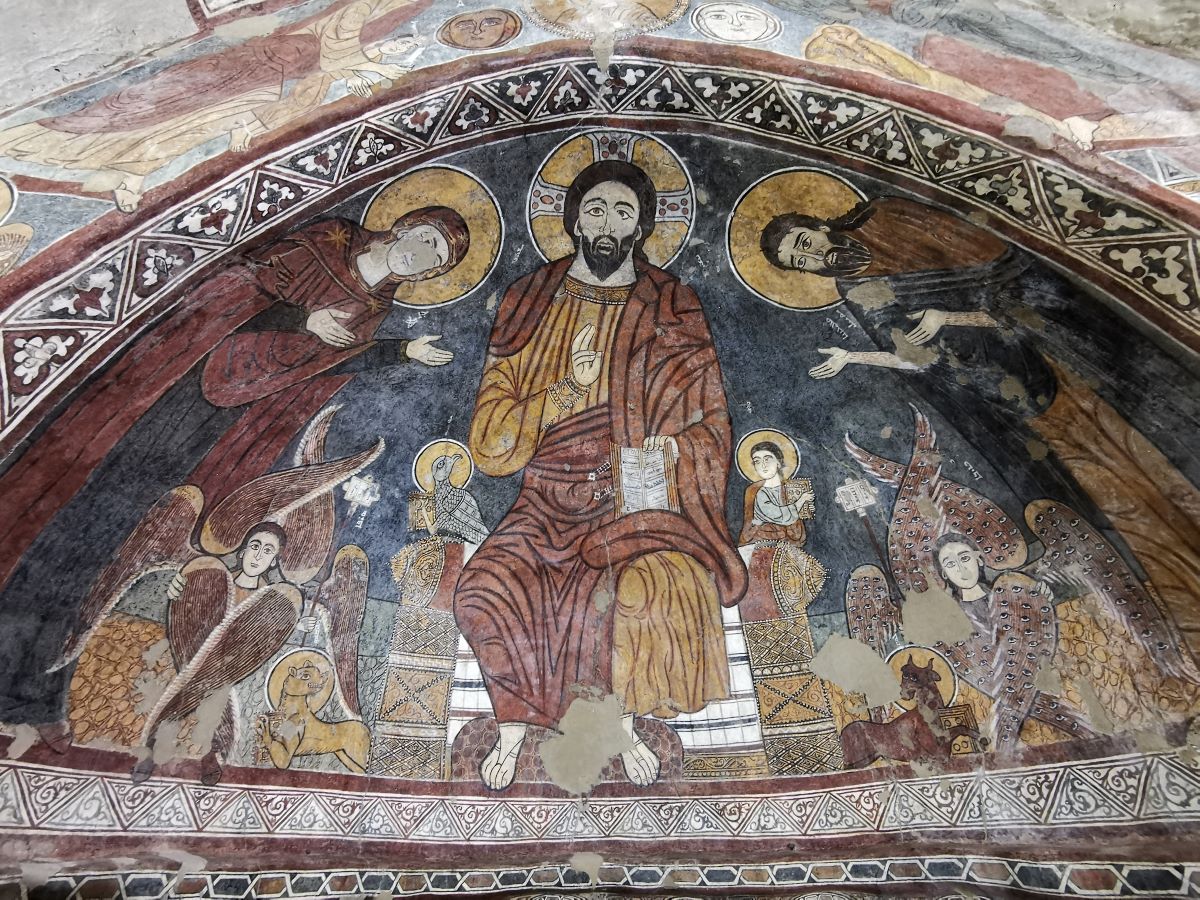The village of Bahdidat houses a magnificent medieval church – Saint-Theodore – known for its Syriac-Byzantine art.
Toponym
A first hypothesis suggests that the name B-ahdidat comes from the name of the Canaanite Deity Hdidat.
Another hypothesis states that “B” refers to Beith (house) and Hdidat the “New Place”.
Structure
The church of Saint-Theodore – or Mar-Todros – is the main attraction in Bahdidat village.
Dating back to the medieval ages – and maybe earlier, the church is famous for its apse that holds one of the best preserved frescoes in Lebanon.
The frescoes underwent extensive restoration in 2008 by a Lebanese-Italian team (Conversation SARL-ICCROM).
The Main Frame – The frame of the dome contains subjects of the Old and New testaments, in connection with God, the Father and his word incarnated and sacrificed.
The Arch, surrounding the main frame, upper section – It contains the icons of the Old Testament:
A- The celestial world, symbolized by 8 stars, clouded above by wavy lines of which appear the hands of the father surrounded by diamonds.
B- The 3 medallions – the largest containing Christ, and the two others containing similar human faces, where one is bursting with light symbol of the sun, and the other dark symbol of obscurity and the moon.
C- Moses, featured as a young man receiving the commandments on an unfolded parchment given by the divine hand, below him the burning bush.
D- Abraham, featured as an old man carrying a knife in his hand to immolate his son Isaac. With his eyes fixed on the holy Father, he is receiving a ram as a propitiation sacrifice.
The Arch, surrounding the main frame, lower section – It contains the icons of the New Testament:
A- The Archangel Gabriel is surrounded by a halo, in a coat beaded on the sides by a luminous thread. He holds a knotty stick in his right hand, with the other he salutes the Virgin.
B- On the right side, the Virgin is seated in profile on a throne, shoulders facing the beholder, head and right hand turned towards Archangel Gabriel.
The Dome, upper section – It contains Christ sitting on the throne as the central figure. With his right hand he blesses and teaches and with the other hand he holds an open Syriac book, placed on the left foot. He is surrounded by John the Baptist on the right side and the Virgin on the left side, representing the theme of intercession.
Around the throne are seated, between the Virgin and John the Baptist, the four symbolic Evangelists.
On the two sides of Christ stand a Cherubim with six wings studded with a large number of eyes, and a Seraphim also with six wings. Both carry a standard on which is inscribed the Trisagion in Syriac.
The Dome, lower section – On the right side is Stephen the first martyr; on the left side the prophet Daniel.
At the bottom of the apse’s conch, twelve people are represented in front of them with halos bearing blades and capes. Each of them in an arcade held by columns with Corinthian capitals.
The Dome, Northern wall – This section features Saint-Theodore bearing arms and mounting a brown horse.
The Dome, Southern wall – This section features Saint-George mounting a white horse, holding the bridle in the left hand and a spear in the other. Close to the horse is seated a small child clutched by the left arm of the rider, who holds a chalice and jug.
The Church’s Nave – Medieval crosses can be seen on the 3 sides of the nave.
The Altar – The altar bears a Greek inscription that states “Faith.Gift.God”
Karim Sokhn
Tour Operator & Tour Guide
References:
Evêché Maronite de Jbeil, March 15th 2019
Byblos-Bahdidat guide, Les Sentiers de la Foi, Mariam G. Matta
